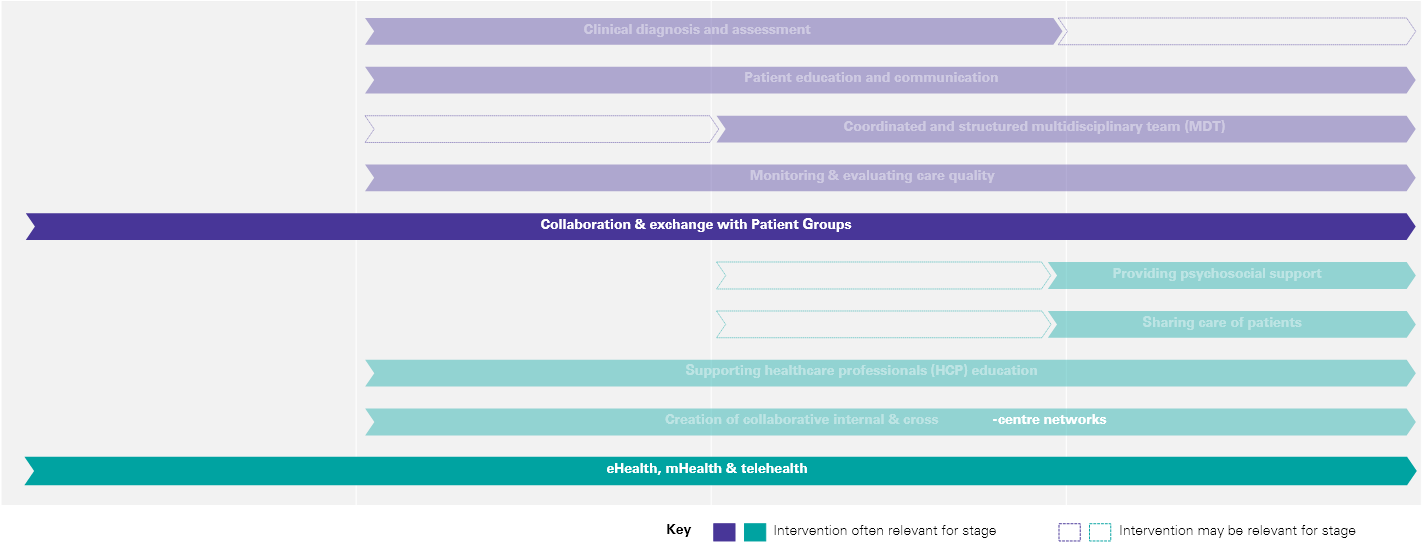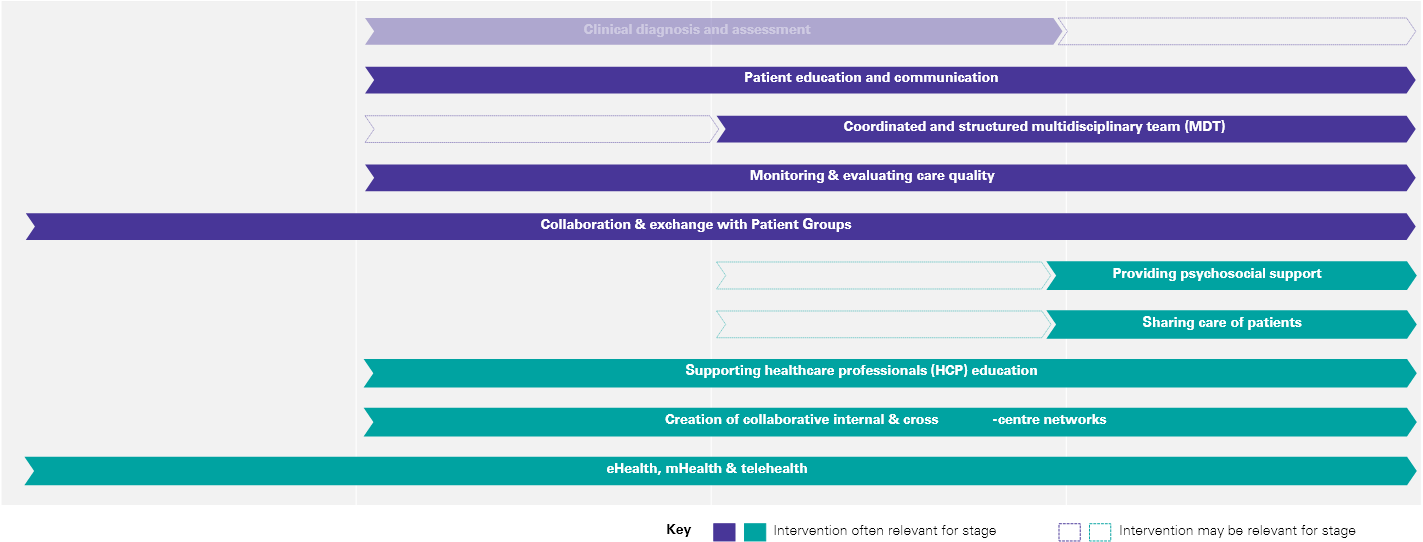Findings
Global Good Practice Interventions

Global Good Practice Interventions

What is/are the goal(s) of the intervention?
Who is often involved in the intervention?
What are the potential outcomes?
What is the challenge?
What is offered as part of the intervention and how has the intervention been implemented in different centres?
Ensuring patients receive a proper disease diagnosis, evaluation and disease assessment using established instruments, in order to inform their management approach in line with guidelines and recommendations
Providing education to patients, relatives and care givers, and communicating it in a way that improves their understanding of atopic dermatitis (AD) and how to effectively manage it
Establishing a multidisciplinary team or network to manage complex patients that follows a structured and coordinated approach to provide holistic patient care
Performing regular monitoring and evaluation of AD care quality at centre and amongst wider network
Working collaboratively and exchanging information with Patient Groups on activities and initiatives aimed at improving AD management, care access and patient QoL
Enabling access to psychosocial support to help patients manage the burden and impact of AD on their psychological, emotional and social wellbeing
Empowering and enabling other team members (e.g. nurses, physician assistants, pharmacists) to support physicians with AD patient education and management, for more effective and efficient care delivery
Delivering, facilitating or enabling education for HCPs involved in the care of AD patients directly or indirectly regarding a recommended management approach
Forming a collaborative network within and across centres (including both primary and secondary care) to optimise research, patient care and knowledge sharing
Using electronic, mobile and tele-technology to improve the quality and efficiency of care delivered to AD patients
Note: These identified good practice interventions should not be viewed as isolated activities, as synergies that exist between them can be leveraged to generate a robust platform for a disease management model for AD globally
Awareness and Presentation Symptom presentation

Diagnosis and Referral In secondary and tertiary care

Treatment and Management Medical and non-medical management

Follow-up Monitoring of chronic disease/flare up
